This is not a price list. If you want a price guide to my services click here.
This article is a repairers point of view (mine!) as to what genres of clock are “risky buys” from a service and purchase cost perspective. As with all my articles there no commercial agenda – just good advice and explanation because that’s what this blog is all about.
So what does actually effect cost of ownership and what makes a clock a horror?
Its largely to do with the age of the clock but it doesn’t work the way you might expect. The tendency among my clients, many of whom have become clock friends I keep in touch with, is to assume increasing age means increasing service costs. Oddly it doesnt work like this and there is a reason…complexity and capitalist egg heads making things difficult for everyone.
Clocks were simple once the pendulum was introduced in 1660 or so. You had three gears leading to an escapement cog and and anchor regulating the turn of the top cog one tooth at a time. Just give the cog 60 teeth and then a pendulum that swings at 60 beats per minute and, bingo, you have a very accurate clock if you stick some hands on the end of the spindle ends. You can make one in your garden out of wood and rubber bands if you put your mind to it. It really could have stayed like this for a very long time and everything would have been fine. Clocks would have been mass produced far earlier and everyone would have access to time and the social integration for work and transport that standardised time delivers in a culture.
Then along come the egg heads. Telling the time isn’t good enough!. It must speak the time. Every hour announcing the division of duties and rotas. You need a clock before you need a whip if your going to run an efficient slave based culture after all.
So, very soon after the clock function comes the chime function. At first with some design restraint and fit for purpose i.e. it strikes out what time it is on the hour. This was quickly standardised upon with two approaches. American, and oddly UK West country clocks use the countwheel system more often than not, whereas London and European clocks use the rack and snail cam system for the most part.
The American system is better because it allows the chimes to be advanced separately to the hour hand. The makes the time easier and faster to change. Its also more reliable and wears less. There are a lot more of the countwheel clocks in genuinely good condition mechanically for this reason. The snail cam clocks always come to me with some level of bodge modification to allow for wear, whereas the countwheel machines can often look like they came out of the shop a couple of years ago (apart from corrosion pitting in inevitable pallet and escapement wear).
Whichever system used both clock types (from around 1660 – 1790) now had many more moving parts that depended on each others wear and performace. Adding this function means more maintenance and more to go wrong. Is it worth it? Probably yes, specially on the long case which used to regulate the house slaves activity in Victorian London for instance.
Thats enough for any clock. With those two features the clock is doing practically everything it really needs to do with the minimum of brass hitting steel (which is the fundamental cause of wear – brass is softer).That covers most long case floor standing and larger wall clocks up to about 1850.
After this things become complicated. Britain and the rest of the world was getting very good at engineering. Components could be made smaller and more accurately from higher grade materials. This opened the door to miniaturisation of the existing two sets of mechanics (time & chime trains). From hereon it all starts to get complicated and actually more expensive on the service side of things.
Smaller components have less room for wear build in as a tolerance. If a pivot end wears its has to be replaced on a small movement. Re-bushing is complicated because you have to locate the new bush with an accuracy of .2mm or less. With a grandfather clock you can shift up to 1mm and in most cases this actually gives the repairer some options to account for uneven pinion gear wear to extend the life of the clock before a full rebuild is necessary.
Its inevitable and human nature to fill up the space you have saved via miniaturisation with other bits of brass that do largely unnecessary things – “just because its possible”. Do you really need you clock to chime three different tunes. Really?. All my customers leave theirs on Westminster or St Micheals which ironically leads to heavier wear on the “Westminster” components and reduces the service interval – more money. As for automata they are just frippery and a draw on the clocks power. Bearing in mind that a spring change is an expensive operation it seems unwise to me to over stress the spring with extra duty thereby reducing its lifetime. More money.
And it doesn’t stop there of course. You have night shutoff mechanisms, quarter chimers, micro regulation spindles, external ruby pallets, and so on and so forth. All completely unnecessary and fundamentally destabilising for the overall balanced performance of the clock (a machine for telling the time).
All this peaked in about 1900. As Victoria died the revolution that had occured in mechanical precision engineering peaked. It really didn’t get much better from a complex precision point of view; from hereon the only thing that changed was the way the components became mass produced, often with inevitable quality issues until after the second world war.
So, what NOT to buy?
As a first clock, dont bother letting anyone sell you a “name” or a a London clock.
Avoid Viennese regulators – specifically the chiming ones. Problems with these are incredibly hard to diagnose and I get competitors ringing me up at the end of their tether asking for advice (in most cases its the top leaf spring by the way chaps – you need to fit a new one and then grind it down to a flexibility that keeps the clock running). The general design problem with them is not the leaf spring alone for the most part. Its the fact that they are incredibly low energy for the pendulum weight and length they use. The weights should be twice as big in my opinion but the fashion as the time was towards miniaturisation and energy reduction purely for reasons of finesse (as opposed to longevity)
Another clock to avoid is a regulator style half hour chimer in a oblong case 1ft x 3ft deep. There is no real “name” for this type of clock but if it looks as described avoid buying it or send me a picture and Ill tell you if its cursed. These fail because they use barrel cage pinion gears which bend over time. Even the ones that don’t seem to have inferior gearing. The components are “skinny” and you feel that there was an effort save money on materials. A completely terrible idea. I can re-drill and fit these with steel rod but its a lot of work and expensive – far more than the clocks are worth. These clocks were produced in what I consider to be the dark times of clock production 1890 – 1910.
Any clock from this period needs to be treated with caution in my opinion, if only because I treat them with caution when quoting and Im at the sharp edge of any bad judgement I make about what the problem might be when quoting. They are tempting however. The clock will have all the bells and whistles, look fantastic, sound fantastic, but will also cost a fantastic amount to get serviced. God forbid you break a spring – all of them use obsolete sizes and I have to make new ones from band steel or modify a stock spring to do the job.
Carriage clocks. Ok… I have to be careful here as there are a lot of carriage clock owners who read this blog. Ironically I love them because they are all the things I said are less desireable from an ownership point of view. I have two – one is spectacular and I dont run it for that reason. They are wonderfully balanced and produced. The problem with them is the platform escapement. This is a little self contained spring and regulator mounted toward the top of the clock. If it breaks fixing it requires watch repair skills and tooling. New platforms are available but it wont look the same and will require some unorthodox mounting in most cases. When sourcing a platformThere are four key dimensions that need to be correct and almost nobody makes them any more. Second hand units can be procured but not by you because you wont know what to buy – even I have to guess sometimes and hope tollerances will allow fitment (Ive lost money repairing these on several occasions with my no fix / no fee policy). Carriage clocks go for between £400 and maybe 2k for the most part although it has to be a chiming repeater to get into that price bracket. You can easily several hundred pounds on a fix for one of the better ones so add this to your purchasing budget as a contingency.
1930’s Grandfather and grandmother clocks. For a brief period these came into fashion and Im asked to repair them every so often. They are not common and very attractive, but BEWARE. Everything I have talked about in this article is relvant to these clocks. They are spectacularly complicated and nothing appears to be standard. Its as if, for some brief time, these clock makes went bonkers and just did everything differently because they though they knew more than 300 years of mechanical evolution. The strike mechanism and its various setting and triggering mechanisms are made….badly. Badly thought out specifically. Levers are pinned with huge balance differences requiring too much force to trigger and this same “I know better” design runs through the clocks like a stick of rock. They are normally chain driven and have a silvered face with Arabic numerals on a brass bezel with a curved art deco style hood. If you see one of these make the sign of a crucifix and back away while casting holy water on all sides. I will fix these clocks but expect the component manufacturing element of the cost to be about 70% of the total cost.
Fusee clocks have problems with springs and chains. I wont go into detail other than to say the springs tend to be massive and unavailable. Its a make from scratch job and expensive. Its one of the few clocks I wont offer a no fix / no fee service on. There is too much trial and error so its got to be time and materials costing for those. That should give you a clue as to the cost!.
So after all this gloom and doom about what not to buy…what are you safer buying. Well heres a few tips.
Buy something unbranded or by somebody who nobody has heard of as a first purchase. Try and get one from a local maker just for the hell of it. It takes the price down a bit and you get largely the same quality. You can learn how to tune the clock up a bit, marvel at its mechanics, enjoy the sound it makes and do a bit of reading about whats really going on in there which only enhances the joy.
The best first mechanical clock to buy is a 1950 – 1970 pendulum mantle clock. These are currently undervalued and heres the thing… by the time these units were in production things had settled down a bit on th engineering standards. Many engineering companies with great skills and capacity like Smiths of Enfield went from making guns to clocks and did a damn fine job at it. Even the basic gong movements have a strong simplicity and ease of service that I suspect has its roots in the manufacturing lessons learned during arms manufacturing where its a bit more than than the time that matters – a limb or life might be at stake if the thins isnt made reliably functioning. These clocks are becoming scarce as they are scrapped due to the cost of repair but, actually, the two values are starting to come much closer together. Values have trippled in 5 years and will only get better – specially for the British clocks as we enter a new age of independence when we will perhaps appreciate more of our brilliant history of innovation and manufacturing.
Grandfather Clocks. Just buy one of these if you have the space. They are being scrapped so fast that supply will be severely restricted once they gain foothold again. They go in and out of fashion and you can rest assured they will soon become the status symbols they were originally manufactured as once more. Go for a 1700 – 1730 brass face or a late white face – say 1820 onwards. The earlier clock will rocket in value over 10 years and the later clock will rise steadily but require less maintance as they are hardly “run in” at that age (built to last).
Its really hard to recommend any other type as they are all different but as general rule go for pendulum as opposed to platform escapement. Anything that is costing you over £1500 – get somebody who knows clocks to look at it before parting with the cash, and if you dont know anybody get a guarantee in writing for warranty. As a last resort I will try and help but theres not much I can do without getting in front of the the thing and testing a few key areas.
I have run out of time!. I help people with quick questions on email all the time and devote 20 mins a day to it so its likely you will get and answer to a simple question if you email me although I cant promise it.
Apologies for the grammar, spelling, order of things, logic and generally shoddy cohesion to this article. I get paid by the hour and this one was free. I may come back to it if my proof reader (Hi John) comes into the antiques centre with his normal damning critique of my general presentation. My ex wife helps with that from time to time as well, normally while laughing and pointing. Dont know why we bothered getting divorced quite frankly. Apparently all my sentences are too long and lack punctuation. Im just going to hit the “publish and be damned” button.

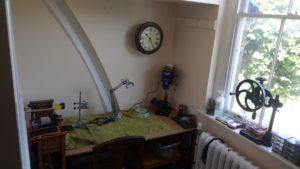
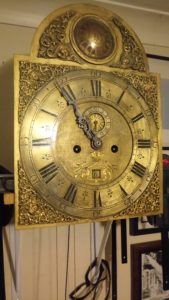
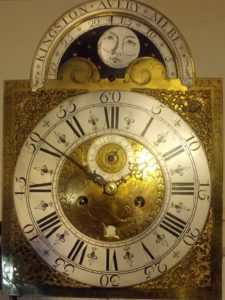
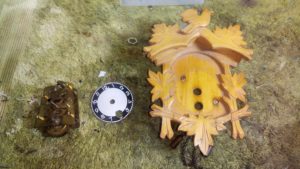
 In terms of setting up the scope its straight forward. First learn the Equitorial Coordinate system which divides up the sky into two axis. I said straight forward, not quick, however all you have to learn is where the axis run from and how the divisions of units work up and down in the N/S E/W rotations. Its fully explained here:
In terms of setting up the scope its straight forward. First learn the Equitorial Coordinate system which divides up the sky into two axis. I said straight forward, not quick, however all you have to learn is where the axis run from and how the divisions of units work up and down in the N/S E/W rotations. Its fully explained here: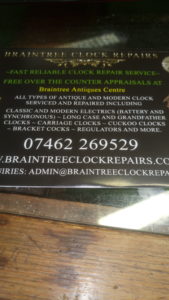

 Unwinding the springs was a 90 degree rotation at a time with thick safety gloves and thick apron. In the past I’ve taken a big spring in the… well you can imagine as I was working at bench / waist height. After that you dont worry too much about the extra hassle of protective wear even if its 10 minutes of digging around for tougher protective gear out for a 2 minute job.
Unwinding the springs was a 90 degree rotation at a time with thick safety gloves and thick apron. In the past I’ve taken a big spring in the… well you can imagine as I was working at bench / waist height. After that you dont worry too much about the extra hassle of protective wear even if its 10 minutes of digging around for tougher protective gear out for a 2 minute job.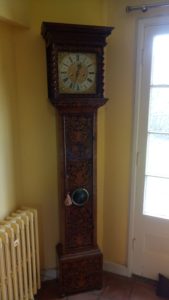
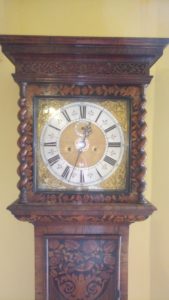
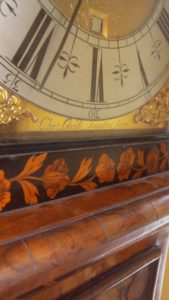
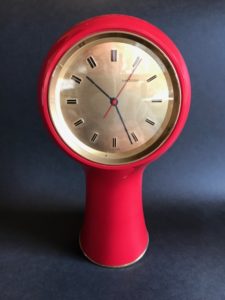
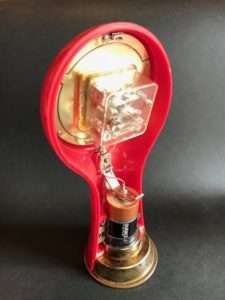
Recent Comments